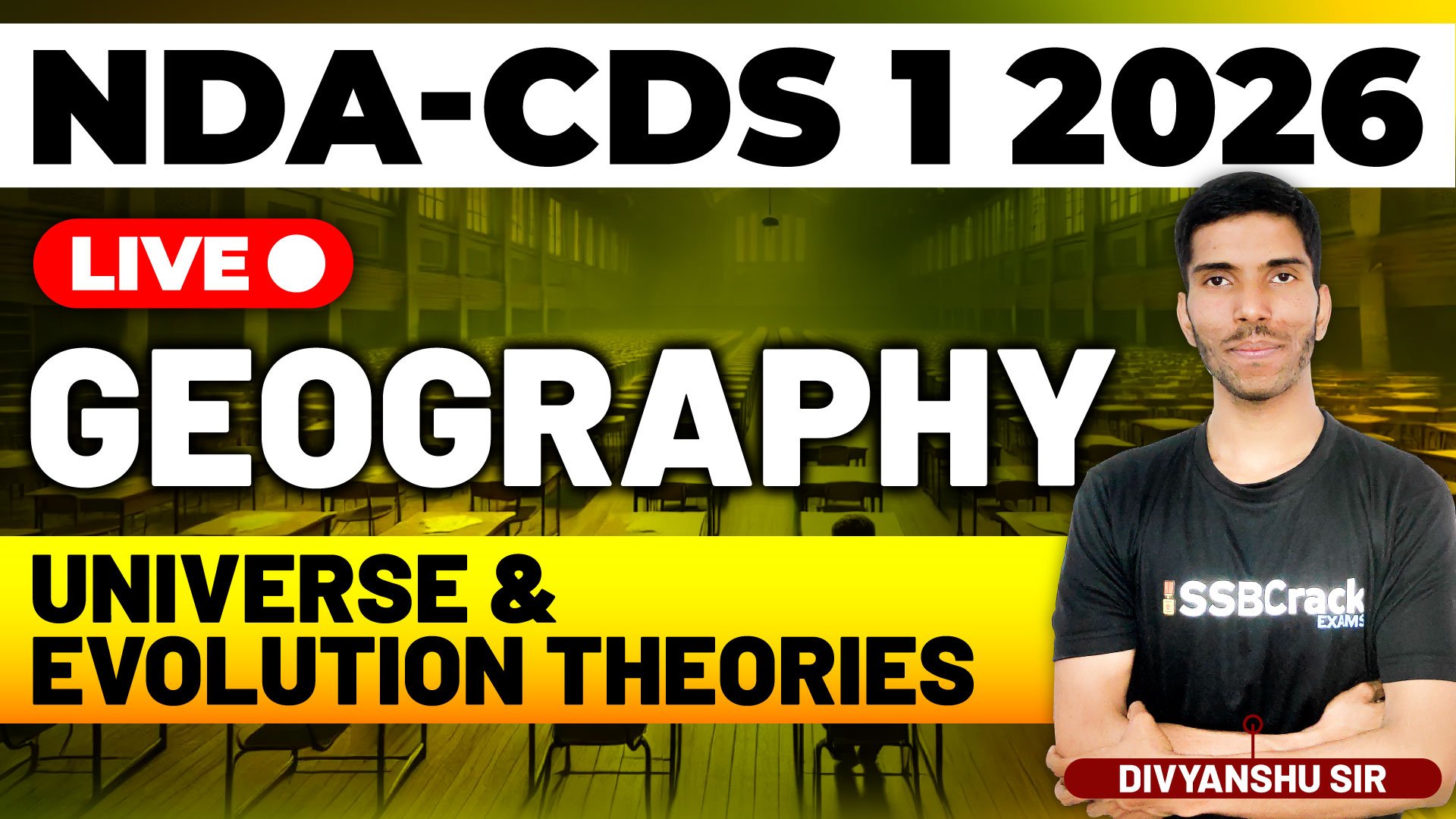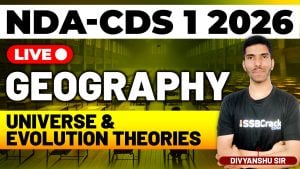The universe, which includes everything that exists—planets, stars, galaxies, and cosmic matter—is vast and ever-expanding. Understanding its origin and structure has been a subject of deep curiosity and study for centuries. For NDA & CDS aspirants, questions from the “Universe and Evolution Theories” topic are common in the General Knowledge section.
NDA & CDS 1 2026 Exam Geography- Universe & Evolution Theories
What is the Universe?
The universe is the totality of space, time, matter, and energy. It comprises billions of galaxies, each containing millions or billions of stars. The Milky Way Galaxy, where our solar system is located, is one such galaxy among many.
Scientists estimate that the universe is about 13.8 billion years old, based on observations of cosmic background radiation and the rate of expansion.
Key Components of the Universe
- Galaxies: Massive systems of stars, gas, dust, and dark matter bound by gravity.
- Examples: Milky Way, Andromeda, Whirlpool Galaxy.
- Stars: Luminous celestial bodies made of hot gases.
- Example: The Sun (a G-type main-sequence star).
- Planets: Celestial bodies that orbit stars.
- Example: Earth, Mars, Jupiter.
- Asteroids and Comets: Small rocky or icy bodies revolving around the Sun.
- Dark Matter & Dark Energy: Invisible components making up about 95% of the universe’s mass-energy.
Major Theories of Universe Evolution
1. Big Bang Theory (Most Accepted)
- Proposed by: Georges Lemaître (later supported by Edwin Hubble).
- Concept: The universe originated from a single, extremely dense and hot point (singularity) about 13.8 billion years ago.
- Evidence:
- Redshift of galaxies (Hubble’s Law) — shows the universe is expanding.
- Cosmic Microwave Background Radiation (CMBR) — the leftover heat from the Big Bang.
- Conclusion: The universe continues to expand, and galaxies are moving away from each other.
2. Steady State Theory
- Proposed by: Hermann Bondi, Thomas Gold, and Fred Hoyle (1948).
- Concept: The universe has no beginning or end. It is constant and unchanging on a large scale.
- Explanation: As the universe expands, new matter is continuously created to maintain a constant density.
- Current Status: Discredited after discovery of the CMBR, which supports the Big Bang Theory.
3. Oscillating (Cyclic) Universe Theory
- Concept: The universe undergoes cycles of expansion and contraction (Big Bang followed by Big Crunch).
- Explanation: After expanding for billions of years, gravitational forces will pull everything back together, leading to another Big Bang.
- Status: Theoretical — not yet proven but supported by some models of quantum gravity.
4. Nebular Hypothesis
- Proposed by: Immanuel Kant (1755) and Pierre-Simon Laplace (1796).
- Concept: The solar system originated from a large rotating cloud of gas and dust (solar nebula).
- Process:
- Nebula contracted under gravity.
- Rotation increased, forming a flattened disk.
- The Sun formed at the center, and planets formed from the remaining matter.
- Importance: Explains the formation of our solar system, not the entire universe.
Other Modern Theories
- Inflation Theory: Proposed by Alan Guth (1981), suggesting the universe underwent rapid exponential expansion just after the Big Bang.
- Multiverse Theory: Suggests that multiple universes exist, each with its own laws of physics.
- String Theory: Proposes that everything in the universe is made up of tiny vibrating strings of energy.
Structure of the Universe
- Solar System: Sun + 8 planets + moons + asteroids + comets.
- Galaxy: Billions of stars bound by gravity (our Milky Way has ~100 billion stars).
- Cluster of Galaxies: Groups of galaxies.
- Supercluster: Clusters of clusters — the largest known structure in the universe.
Key Facts for NDA & CDS Exams
- Age of Universe: ≈13.8 billion years
- Age of Earth: ≈4.54 billion years
- Closest Galaxy: Andromeda (M31)
- Shape of Milky Way: Spiral
- Distance from Earth to Sun: ≈149.6 million km (1 Astronomical Unit)
- Speed of Light: 3 × 10⁸ m/s
Conclusion
The study of the universe and its evolution reveals how cosmic phenomena shape our existence. From the Big Bang to the formation of galaxies and solar systems, these theories help us understand where we come from and where we might be heading. For NDA and CDS aspirants, mastering these concepts not only strengthens their General Science and Geography sections but also builds a deeper appreciation for the cosmos.



















